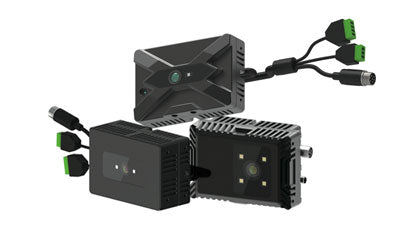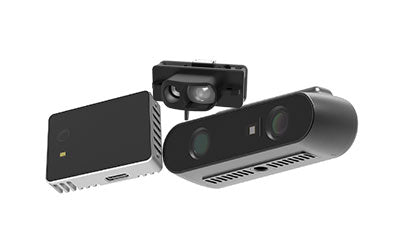Smart Cultural Tourism with TOF: From Guided Tours to Crowd Management

Amid the global digital wave, the cultural tourism industry is undergoing unprecedented transformation. Scenic spots are no longer just about 'viewing' but actively exploring how technology can enhance visitor experiences and optimize operations. In this process, Time-of-Flight (TOF) technology, an advanced 3D imaging technology, is playing an increasingly critical role in smart cultural tourism.
Growing Demand for Digital Transformation in Cultural Tourism
In recent years, visitors’ demand for personalized, immersive, and interactive travel experiences has been rising. Traditional guiding methods and crowd management can no longer meet modern tourists’ diverse needs. Facing peak crowds, service gaps, and safety risks, scenic areas urgently need to introduce intelligent perception and automation systems to build an integrated service system of 'smart guiding, smart interaction, and smart scheduling.'
What is a 3D ToF Camera?
A 3D ToF camera is a three-dimensional imaging device based on the Time of Flight principle. It emits infrared light signals and measures the time taken for the light to travel to an object and back, calculating the distance between the camera and the object to generate high-precision 3D depth images. 3D ToF cameras are widely used in gesture recognition, human pose capture, smart homes, robot navigation, and health monitoring, offering real-time imaging, low latency, and strong anti-interference capabilities.
TOF Empowers Smart Guided Tours and Crowd Heatmap Analysis
TOF cameras quickly and accurately build 3D scene models by calculating the time of emitted and reflected light pulses. Compared to traditional 2D vision systems, 3D TOF cameras and RGB-D cameras provide richer depth information suitable for complex scenic environments.
-
Smart Guided Tour Systems:
TOF sensors capture spatial depth precisely, enabling real-time recognition of visitor positions, movement trajectories, and dwell behavior. In scenic spots, museums, or themed exhibitions, combined with voice broadcast devices, displays, and AI algorithms, they create a 'play when visitors arrive, pause when they leave' intelligent tour experience.
For example, deploying 3D TOF cameras inside museum halls allows precise detection of each visitor’s proximity and gaze direction to judge interest in exhibits. When visitors approach, the system triggers corresponding explanations, dynamically adjusting content detail and form (brief, detailed, voice, video) based on dwell time and behaviors like phone usage or movement, enhancing personalized interaction.
Multi-user recognition and area management avoid false triggers or playback errors common in traditional infrared-based guides. In outdoor parks, combined with positioning systems and mobile apps, TOF cameras support route planning and immersive check-in interactions, offering a high-tech visitor experience. -
Crowd Heatmaps and Behavior Recognition:
Utilizing TOF’s high frame rate and precise 3D sensing, systems capture visitor distribution, dwell time, and movement in real time, generating dynamic crowd heatmaps with color gradients indicating density changes to help managers identify peak times and congestion zones.
Integrating with SLAM (Simultaneous Localization and Mapping) robot navigation technology enables autonomous map building, localization, and crowd flow tracking for predictive visitor guidance. Mobile guide robots equipped with TOF cameras can analyze crowd density and intelligently reroute visitors to avoid crowded areas, optimizing flow lines.
TOF also detects individual behaviors such as fast movement, long stays, or group gatherings, supporting detailed data analysis to identify popular or underused areas and potential safety risks. Data-driven closed-loop management enhances scheduling and security for efficient, safer smart operations.
Immersive Experience: TOF Opens a New Era of Naked-Eye 3D and Interaction
TOF is a foundation for immersive exhibitions and interactive experiences by building real-time 3D models, enabling:
-
Naked-Eye 3D Interactive Displays:
TOF captures visitors’ 3D spatial positions and movements, allowing high-precision body posture recognition to power naked-eye 3D devices for touchless natural interaction. Visitors can control virtual exhibits through gestures like waving, pointing, turning, or sliding without headsets or controllers, manipulating rotation, zoom, switching, and more. Exhibits come alive vividly.
In themed halls, historical sites, and science exhibitions, this technology breaks the one-way “view-only” mode, letting visitors rotate 3D artifact models, explore historical timelines via gestures, or roam virtual scenes through body movements. It greatly enhances participation, immersion, education, and entertainment.
The low latency and high responsiveness ensure smooth, natural interaction, avoiding touchscreen limitations and hygiene concerns. Promoting contactless interaction aligns with current health safety demands in public cultural spaces. Naked-eye 3D interaction bridges reality and virtuality, turning visitors from passive viewers to active explorers, enriching cultural experience depth and breadth. -
Virtual Guides and Interactive AI Customer Service:
Leveraging TOF’s precise depth data and multidimensional 3D vision fusion, virtual guides can accurately recognize visitor gestures like waving, raising hands, nodding, and subtle facial expressions such as confusion or surprise, enabling more natural understanding of visitor needs and reactions, improving interaction warmth and intelligence.
Combined with advanced natural language processing (NLP) and voice recognition, virtual guides support multi-language, multi-turn conversations, providing route planning, exhibit introductions, and personalized recommendations based on visitor interests and locations.
Virtual guides continuously analyze visitor behavior and feedback to dynamically optimize service and interaction strategies. AI customer service supports emergency detection and response, offering timely help or guidance, improving safety. Managers use multi-dimensional data from AI to analyze satisfaction, regulate hotspots, and evaluate service quality for precise smart scenic management and ongoing upgrades.
Application Cases: Museum Automated Narration and Scenic Area AI Customer Service System
Taking a provincial museum as an example, the museum has introduced advanced TOF depth cameras (3D depth cameras) and semantic recognition modules to create a “contactless proximity” automatic narration system. Visitors do not need to operate anything; when they approach a specific exhibit area, the system uses TOF sensors to accurately capture their spatial position and behavioral characteristics, quickly triggering multilingual voice explanations.
Meanwhile, rich graphical and video content is displayed synchronously on nearby digital screens. This intelligent interaction greatly enhances visitors’ information acquisition efficiency and increases the exhibition’s interest and immersion. It is especially suitable for audiences from diverse cultural backgrounds, breaking language barriers and meeting personalized tour guide needs.
On the other hand, a national 5A-level scenic spot has successfully deployed an AI customer service system based on TOF visual recognition technology and machine vision algorithms. This system can recognize facial expressions, body postures, and motion commands in real-time, actively greet visitors, detect help signals, and respond promptly. Combined with scenic area maps and path planning algorithms, the AI customer service not only provides precise route navigation but also proactively recommends popular attractions and activities based on visitors’ current status, enhancing the touring experience.
In emergency situations, the system alerts immediately and guides visitors to safety zones to ensure their safety. Through this 'warm' intelligent service, the scenic spot achieves human-machine collaborative management, optimizes crowd control and service efficiency, and sets a new benchmark for smart tourism.
Data Value: Enhancing Visitor Experience and Scenic Area Operational Efficiency
TOF technology not only offers visitors precise and intelligent guided experiences but also becomes a core 'data engine' for scenic area management and operation. By collecting and analyzing key data such as visitor movement trajectories, dwell times, and interaction frequencies in real-time, managers can gain comprehensive insights into crowd distribution and hotspot areas. They can accurately identify high-traffic zones and less-visited exhibits, scientifically optimize circulation paths and resource allocation, thereby effectively alleviating congestion and improving visitor comfort and satisfaction.
Based on TOF’s depth information and 3D spatial perception capabilities, combined with advanced 3D vision inspection technology and intelligent AI analysis models, the system can automatically detect abnormal visitor behaviors (such as falls, running, or unusual gatherings) and provide early warnings of potential safety risks. This proactive safety protection significantly improves the level of security management within scenic areas, ensuring the safety of visitors’ lives and property and enhancing management’s initiative and response speed.
Furthermore, these real-time dynamic data constructed through TOF 3D sensing lay a solid foundation for the development of digital twin platforms in scenic areas. Digital twin technology can realize panoramic 3D simulation and virtual reproduction of scenic spots, support multidimensional and multi-scenario data overlay and simulation analysis, and provide powerful technical support for future intelligent management, smart scheduling, and precise marketing. Through digital twins, managers can not only remotely monitor the operational status of scenic areas but also make scientific decisions based on simulation results, driving scenic areas toward a digital and intelligent new era.
Conclusion: TOF Opens a New Era for Smart Cultural Tourism
As an advanced Time of Flight sensing method, TOF technology is integrating into various subdivisions of smart cultural tourism at an unprecedented speed. From intelligent navigation and crowd management to immersive interactive experiences, TOF is reshaping the connection between visitors and scenic spots and opening a gateway to high-quality development for the cultural tourism industry.
With continuous upgrades in 3D TOF cameras, RGBD systems, and SLAM visual computing, future cultural tourism scenarios will become smarter, more personalized, and more efficient. TOF will continue to play an irreplaceable role in this ongoing transformation.
Synexens Industrial Outdoor 4m TOF Sensor Depth 3D Camera Rangefinder_CS40p
After-sales Support:
Our professional technical team specializing in 3D camera ranging is ready to assist you at any time. Whether you encounter any issues with your TOF camera after purchase or need clarification on TOF technology, feel free to contact us anytime. We are committed to providing high-quality technical after-sales service and user experience, ensuring your peace of mind in both shopping and using our products.





